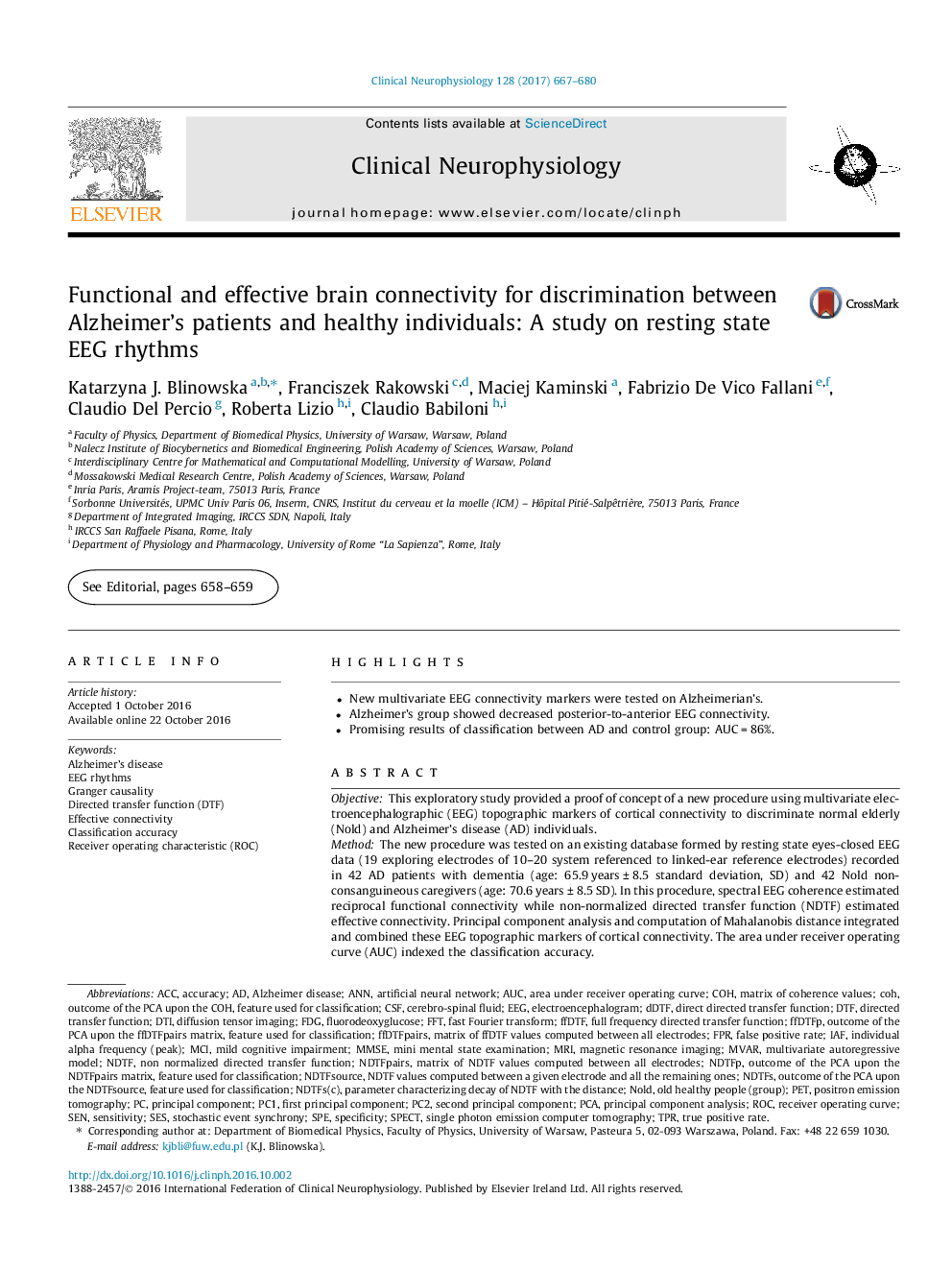| Article ID | Journal | Published Year | Pages | File Type |
|---|---|---|---|---|
| 5627641 | Clinical Neurophysiology | 2017 | 14 Pages |
â¢New multivariate EEG connectivity markers were tested on Alzheimerian's.â¢Alzheimer's group showed decreased posterior-to-anterior EEG connectivity.â¢Promising results of classification between AD and control group: AUC = 86%.
ObjectiveThis exploratory study provided a proof of concept of a new procedure using multivariate electroencephalographic (EEG) topographic markers of cortical connectivity to discriminate normal elderly (Nold) and Alzheimer's disease (AD) individuals.MethodThe new procedure was tested on an existing database formed by resting state eyes-closed EEG data (19 exploring electrodes of 10-20 system referenced to linked-ear reference electrodes) recorded in 42 AD patients with dementia (age: 65.9 years ± 8.5 standard deviation, SD) and 42 Nold non-consanguineous caregivers (age: 70.6 years ± 8.5 SD). In this procedure, spectral EEG coherence estimated reciprocal functional connectivity while non-normalized directed transfer function (NDTF) estimated effective connectivity. Principal component analysis and computation of Mahalanobis distance integrated and combined these EEG topographic markers of cortical connectivity. The area under receiver operating curve (AUC) indexed the classification accuracy.ResultsA good classification of Nold and AD individuals was obtained by combining the EEG markers derived from NDTF and coherence (AUC = 86%, sensitivity = 0.85, specificity = 0.70).ConclusionThese encouraging results motivate a cross-validation study of the new procedure in age- and education-matched Nold, stable and progressing mild cognitive impairment individuals, and de novo AD patients with dementia.SignificanceIf cross-validated, the new procedure will provide cheap, broadly available, repeatable over time, and entirely non-invasive EEG topographic markers reflecting abnormal cortical connectivity in AD patients diagnosed by direct or indirect measurement of cerebral amyloid β and hyperphosphorylated tau peptides.
